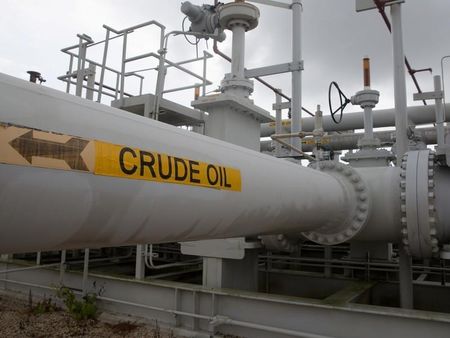Commodities
Oil prices notch positive week amid ongoing Middle East tensions

Investing.com — Oil prices settled higher Friday, wrapping up a positive week as persistent concerns over the Middle East conflict kept a risk premium in play.
At 2:30 p.m. ET (1830 GMT), while climbed 2.2% to $71.77 a barrel, rose 2.1% to $75.96 a barrel.
Oil set for weekly gains
The crude benchmarks were trading over 2% higher this week, recovering some measure of the steep losses logged earlier in October.
A bigger recovery in crude was held back by data showing a bigger-than-expected build in , indicating less tight supplies in the world’s biggest fuel consumer.
A strong also weighed on crude as continued concerns over a slower pace of interest rate cuts by the Federal Reserve kept traders biased towards the greenback.
Oil prices were trading off weekly highs as speculation over the Middle East conflict sparked some volatility in markets.
While Israel presented a harsh rhetoric against Iran this week, U.S. officials kept up their efforts to broker a ceasefire, especially before the 2024 presidential elections, which could alter future U.S. policy in the Middle East.
Israel has vowed to attack Iran over an early-October strike, which kept traders on edge over an escalation in the conflict that could potentially disrupt supplies from the Middle East.
The number of oil rigs operating in the U.S. fell by 2 to 480, according to data Friday from energy services firm Baker Hughes.
China stimulus in focus
Recent weakness in oil markets was driven chiefly by concerns over slowing demand in top importer China, as a swathe of stimulus measures from the country spurred limited optimism.
Traders were underwhelmed by a lack of details from Beijing on the timing and scale of its planned measures, especially on the fiscal front.
The Standing Committee of the National People’s Congress is now set to meet in November, where policymakers are likely to decide on plans for more fiscal spending. The committee was initially expected to meet in late October, but was delayed.
“The market continues to be caught between supply risks related to ongoing Middle East tension and lingering demand concerns. The outlook for a comfortable 2025 oil balance will also be playing a role in price action,” said analysts at ING, in a note.
(Peter Nurse, Ambar Warrick contributed to this article.)
Commodities
Oil prices rise; U.S. crude inventories plunge, Russia-Ukraine truce eyed
Commodities
India’s Reliance to stop buying Venezuelan oil over US tariffs, sources say
Commodities
Oil prices climb on Venezuela supply worries

 Forex3 years ago
Forex3 years agoForex Today: the dollar is gaining strength amid gloomy sentiment at the start of the Fed’s week

 Forex3 years ago
Forex3 years agoUnbiased review of Pocket Option broker

 Forex3 years ago
Forex3 years agoDollar to pound sterling exchange rate today: Pound plummeted to its lowest since 1985

 Forex3 years ago
Forex3 years agoHow is the Australian dollar doing today?

 Cryptocurrency3 years ago
Cryptocurrency3 years agoWhat happened in the crypto market – current events today

 World3 years ago
World3 years agoWhy are modern video games an art form?

 Commodities3 years ago
Commodities3 years agoCopper continues to fall in price on expectations of lower demand in China

 Economy3 years ago
Economy3 years agoCrude oil tankers double in price due to EU anti-Russian sanctions























